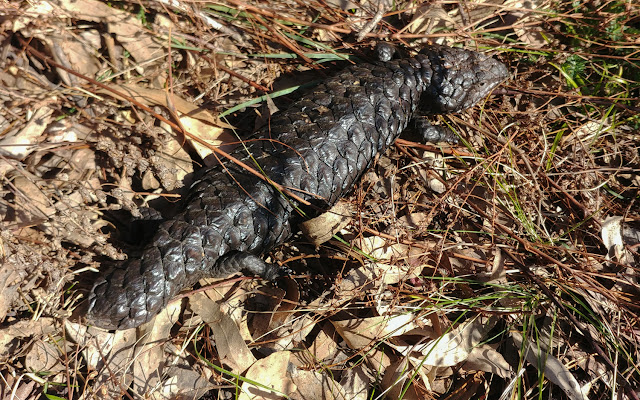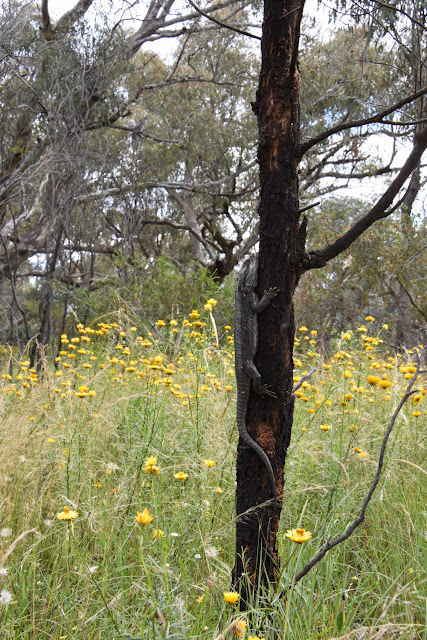Tawny Frogmouth chicks:
vulnerable when fledging
Tawny Frogmouth chicks are now fledging in Canberra, and unfortunately there have been some heavy and prolonged rainstorms at the same time. This has caused some chicks to be grounded when they fly between trees and if they stay there, they can be vulnerable to predators such as cats and foxes - both introduced pest species. Every year, people find such grounded fledgling frogmouths and are tempted to take them home to save them. After all, they are the most Instagrammable bird in the world, with their fluffiness, big forward facing eyes and apparent sad mouth-line. See the scientific paper below that describes the relevant study:
Thommes, K. & Havn-Leichsenring, G. (2021). What Instagram can teach us about bird photography and color preferences. i-Perception, 12: 20416695211003585.
This chick was low to the ground, on a fallen branch, but its sibling had disappeared. It probably died during the heavy rain in the previous night after grounding in the tall grass and weeds that are growing all through the woods this year due to the rain. The birds cannot climb up out of tall wet grass and can quickly succumb to exposure.
It is difficult for me to walk through the tall grass and weeds. It must be deadly for frogmouth fledglings. And I have seen this happen before.
Nevertheless, please do not pick these birds up and take them home. They are not pets. The best thing to do is place them on a nearby branch, up off the ground, as high as possible and walk away quietly, without drawing attention of any predatory birds that might be watching, such as ravens or currawongs. The chick's parents will be watching them, like the adult pair in the background of this picture.






















